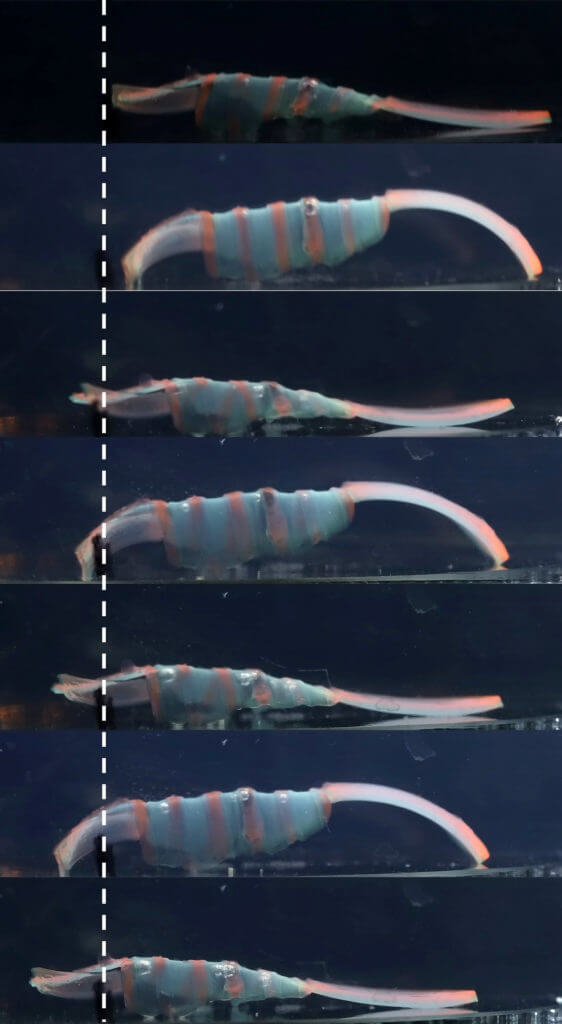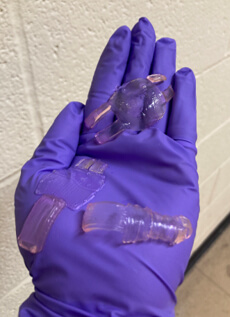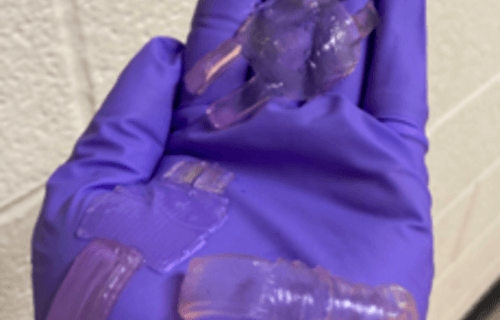BALTIMORE — A creepy crawly robot that travels through the body to cure disease has been created by scientists.
The 3D-printed machine is made out of gelatin, and researchers from Johns Hopkins University say it does “the worm” when it detects changes in temperature. It was inspired by the inchworm, bringing a “kind of intelligence” to the field of soft robotics.
The smart device could replace pills or intravenous injections that can cause life-threatening side-effects.
“It seems very simplistic but this is an object moving without batteries, without wiring, without an external power supply of any kind – just on the swelling and shrinking of gel,” says senior author David Gracias, a professor of chemical and biomolecular engineering at Johns Hopkins, in a media release.
“Our study shows how the manipulation of shape, dimensions and patterning of gels can tune morphology to embody a kind of intelligence for locomotion.”

Aishwarya Pantula/Johns Hopkins University)
The worm-like robots offer hope of carrying payloads of drugs directly to a tumor, blood clot, or infection — leaving healthy tissue alone. Scientists have almost exclusively made robots out of hard materials like metals and plastics, a fundamental obstacle in biomedical advancements.
The water-based “gelbot” feels like a gummy snack. Previous research has demonstrated that gels that swell or shrink in response to temperature can create smarter structures. Now, the new study has shown they can be strategically manipulated to move robots forward and backward on flat surfaces.
They can also be encouraged to crawl in certain directions with an undulating, wave-like motion — like the worm. They are also cheap and easy to mass produce. Prof. Gracias foresees a range of practical future applications, including moving on surfaces through the human body to deliver targeted medicines.

Unlike tablets swallowed or liquids injected, the gelbots would withhold medicine until it reaches the target to release a high-concentration drug. They could also be marine robots, patrolling and monitoring the ocean’s surface to combat pollution.
Prof. Gracias is planning to train the gelbots to crawl in response to variations in human biomarkers and biochemicals. Study authors also want to test other worm and marine organism-inspired shapes and forms and would like to incorporate cameras and sensors on their bodies.
The team hopes robots will eventually change how doctors examine patients, serving as minimally invasive devices for biomedical diagnosis and treatments.
The robot is described in the journal Science Robotics.
South West News Service writer Mark Waghorn contributed to this report.
